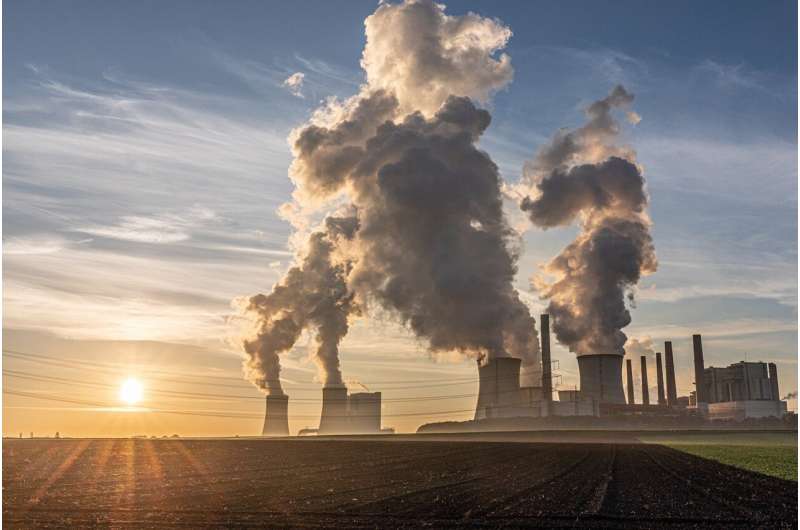
The big challenge is to identify the fairest and most equitable way that governments can curtail energy use, a process known as energy demand reduction.
In the paper, "Emissions savings from equitable energy demand reduction," in the journal Nature Energy, the research team—led by Milena Büchs, Professor of Sustainable Welfare at the University of Leeds—analyzed several scenarios to identify a potential solution.
One option is to cap the top 20% of energy users while allowing those people who use little energy and have poverty-level incomes to be able to increase their consumption levels and improve their quality of life.
Setting the energy use cap
Across any population there will be a range—or distribution—of values for how much energy individuals use. The values are sorted into 100 percentiles—for example, the 50th percentile represents the value that is exactly in the middle of the energy distribution, which half the population fail to reach and the other half exceeds.
Under the energy demand reduction scheme, the top-level energy users would see their energy use restricted to the value of energy use at the 80th percentile. In the scenario modeled, that would be 170.2 gigajoules (GJ) per person per year, compared to the mean energy use of the top 20% of consumers of 196.8 GJ per person per year.
Using data from 27 European states, the researchers modeled how effective this energy demand reduction strategy would be. They found it would cut greenhouse gas emissions by 11.4% from domestic energy sources; 16.8% from transport and 9.7% from total energy consumption.
Allowing people in poverty to increase their energy use would reduce these emissions savings by relatively small amounts—1.2 percentage points for domestic energy; 0.9 for transport; and 1.4 for total energy consumption. It would enable the less well-off to meet unmet needs, perhaps where they may have been unable to adequately heat their home.
Professor Büchs said, "Policymakers need to win public support for energy demand reduction mechanisms. The reality is decarbonization on the supply side, where energy is generated and distributed, will not be enough to deliver the emission reductions that are needed.
"So, energy demand will have to be reduced. That is the inescapable reality. Experts on the UN's Intergovernmental Panel on Climate Change estimate that reducing energy demand could produce between 40% and 70% of the emissions reductions that need to be found by 2050.
"Our research is indicating that public support for energy demand reduction is possible if the public see the schemes as being fair and deliver climate justice."
The data in the study was collected as part of the 2015 European Household Budget Survey from 275,614 households. Household expenditure and data from the Exiobase dataset were used as proxies for energy use and emissions.
Public support
As part of the study, the research team also held focus groups with the public to gauge people's responses to different policy interventions to reduce energy use. Quotas on flights and car mileage were seen by some respondents as attacks on freedom and choice.
Conversely, other people supported a ban on activities beyond a certain level, say for business or personal flights.
There was a recognition that there is a climate emergency and the problem needs to be tackled urgently.
Writing in the journal, the researchers noted, "Several participants acknowledged that regulations that limit 'luxury' energy use would treat everyone equally and therefore fairly, which can be conducive to acceptance if good reasons are provided, as travel and other restrictions during the COVID-19 pandemic have demonstrated."
Targeting "luxury" energy use would be seen to treat everyone fairly and equally and that could soften any opposition to energy demand mechanisms.